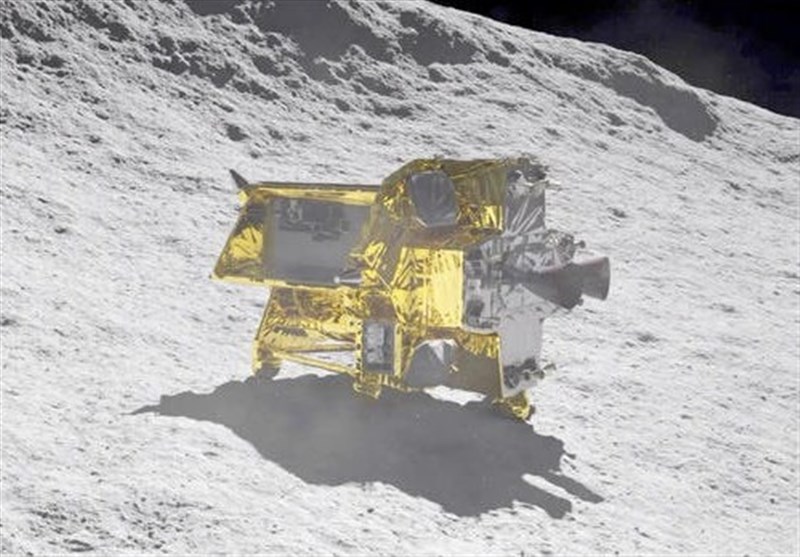Japanese Moon Lander Faces Mission-Ending Power Glitch
TEHRAN (Tasnim) – A robotic Japanese moon lander, named the Smart Lander for Investigating the Moon (SLIM), successfully touched down on the lunar surface on Friday.
However, the mission encountered a critical power glitch that has jeopardized its ability to function in the challenging lunar conditions.
The power glitch affected the solar cells of the spacecraft, hindering their ability to generate electricity essential for the mission's survival. Despite SLIM's overall health, mission managers anticipate that the lander will deplete its batteries within hours of landing, rendering it powerless and incapable of receiving or transmitting data to Earth.
While there is a glimmer of hope that the probe may "wake up" if the spacecraft landed incorrectly, the uncertainty remains high. Hitoshi Kuninaka, director general of the Japan Aerospace Research Agency (JAXA), emphasized that SLIM is communicating with Earth but is currently unable to generate electricity from its solar cells.
"The SLIM has been communicating to the Earth station and it is receiving commands from the Earth accurately, and the spacecraft is responding to these in a normal way," said Kuninaka. "However, it seems that the solar cells are not generating electricity at this point in time."
Efforts are underway to retrieve stored data and maximize the scientific return before the battery power is exhausted. The mission's outcome is uncertain, and the potential for a successful recovery depends on various factors.
Notably, only the United States, Russia, China, and India have achieved successful moon landings, with three private landing missions as commercial ventures ending in failure. The recent incident follows the demise of the Peregrine moon lander, built by Astrobotic, which ended up in an elliptical Earth orbit due to technical malfunctions.
Astrobotic CEO John Thornton expressed confidence in learning from the Peregrine mission's challenges and incorporating successes into the upcoming Griffin program, scheduled for launch later this year.
JAXA's SLIM mission aimed to demonstrate a high-precision landing system and test an innovative lightweight design for smaller spacecraft. Launched in September, the spacecraft had successfully maneuvered into a lunar orbit before its descent to the surface.
Despite the power glitch, telemetry indicated that SLIM followed its planned trajectory during the descent. The spacecraft's successful soft landing raised hopes for potential data acquisition and analysis. Extensive scrutiny will be required to determine the spacecraft's orientation and assess the precision of the landing.





